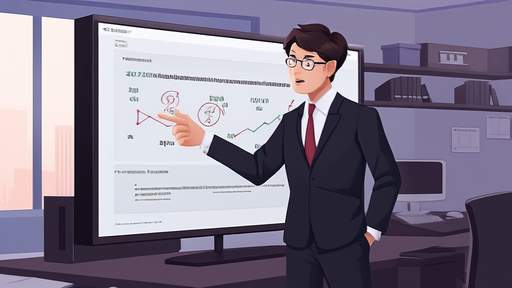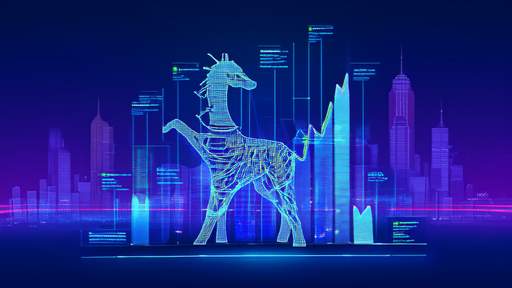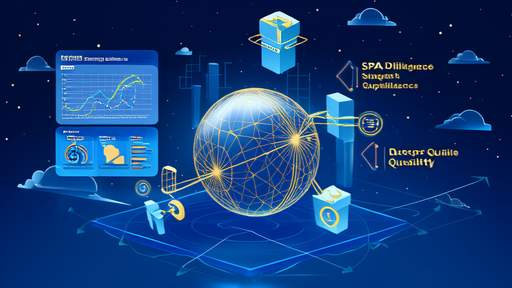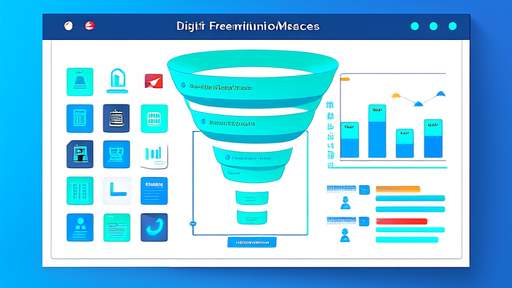The world of Real Estate Investment Trusts (REITs) is often viewed through the lens of yield and liquidity, but beneath the surface lies a complex web of operational risks that can ripple through portfolios with surprising force. These risks, embedded in the very assets that underpin REIT valuations, are frequently underestimated by investors chasing stable income streams. The truth is, the operational health of shopping malls, office buildings, apartment complexes, and other property types directly influences REIT performance in ways that transcend simple lease agreements.
At the heart of REIT operational risk lies the fundamental tension between physical assets and financial instruments. Unlike traditional stocks, REITs cannot divorce themselves from the brick-and-mortar realities of their underlying properties. A poorly maintained office tower in Chicago or an underperforming retail center in Atlanta doesn't just represent a localized problem—it becomes a systemic issue for the entire trust. This physicality creates unique vulnerabilities, as maintenance backlogs, tenant defaults, or even changing neighborhood dynamics can quickly translate into financial distress.
The pandemic era provided a brutal case study in operational risk transmission. REITs specializing in class B office spaces found themselves grappling with vacancy rates that would have seemed unimaginable in 2019. As white-collar workers abandoned cubicles for home offices, the cash flows supporting these REITs evaporated almost overnight. What many investors failed to appreciate was how quickly operational challenges—cleaning protocols, HVAC upgrades to meet new health standards, reconfiguring floor plans—could drain reserves and compromise distributions.
Retail REITs face perhaps the most visible operational challenges in today's market. The rise of e-commerce has transformed what was once considered prime retail space into potential liabilities. Mall operators must now contend with not just finding tenants, but creating experiential environments that justify physical visits. The cost of these transformations—from adding climbing walls to converting anchor stores into fulfillment centers—falls squarely on REIT balance sheets. When these operational investments fail to generate sufficient foot traffic, the financial consequences cascade through the trust structure.
Industrial REITs, while currently enjoying strong demand, aren't immune to operational risks either. The logistics properties that seemed like sure bets during the e-commerce boom now face challenges from automation and changing inventory strategies. A distribution center designed for human pickers may become obsolete as robotics advance, forcing expensive retrofits. Similarly, the just-in-time inventory model that fueled warehouse demand could shift toward more resilient (but space-intensive) stockpiling approaches, altering space requirements in unpredictable ways.
Multifamily housing REITs demonstrate how operational risks can emerge from seemingly stable assets. Rising construction costs and labor shortages make routine maintenance and renovations more expensive, squeezing operating margins. Meanwhile, changing tenant expectations around amenities—from coworking spaces to package delivery systems—require continuous capital expenditures. In rent-controlled markets, the inability to pass these costs through to tenants creates particularly acute pressure points that can undermine long-term valuations.
The hospitality sector presents perhaps the most volatile operational environment of all REIT categories. Hotel properties face relentless operational pressures—from labor relations to energy costs to ever-changing consumer preferences. A luxury hotel REIT might see its fortunes swing based on something as seemingly minor as housekeeping staff turnover rates or the adoption of new booking technologies by competitors. These operational factors don't just affect individual properties; they reshape the competitive landscape across entire portfolios.
Healthcare REITs face unique operational challenges tied to their specialized tenants. Nursing homes, hospitals, and medical offices operate under regulatory frameworks that can change abruptly, affecting their ability to meet lease obligations. The pandemic exposed how quickly healthcare property needs can evolve, with some facilities requiring expensive retrofits while others became functionally obsolete. REITs in this space must maintain unusually close relationships with their tenants to anticipate and adapt to these operational shifts.
Technology is reshaping operational risk profiles across all REIT categories. Smart building systems promise operational efficiencies but introduce new vulnerabilities—from cybersecurity threats to the risk of technological obsolescence. A REIT that invested heavily in proprietary building management software might find itself locked into outdated systems, while competitors leapfrog ahead with newer solutions. These technological operational risks compound traditional physical risks in ways that many REIT managers are still learning to navigate.
The climate crisis represents perhaps the most profound operational risk multiplier for REITs. Physical assets must now contend with rising insurance costs, resilience upgrades, and in some cases, fundamental questions about long-term viability. Coastal properties face sea level rise, while inland assets confront extreme weather events. These environmental operational risks don't just affect individual properties—they can systematically alter the valuation models for entire REIT sectors, particularly as insurers and lenders adjust their risk appetites.
Labor dynamics present another layer of operational complexity. The same property that generated stable cash flows with unionized janitorial staff might become a financial drain if labor contracts are renegotiated or if skilled workers become scarce. REITs with geographically concentrated portfolios face particular exposure to local labor market conditions, creating operational risk concentrations that may not be immediately apparent from financial statements.
Perhaps the most insidious operational risks stem from the interplay between different property types within diversified REITs. A trust holding both office and retail space might face compounded challenges when remote work reduces both daytime office populations and the customer base for nearby retailers. These synergistic operational risks can create downward spirals that are difficult to arrest, particularly when lease expirations become clustered in periods of operational stress.
The capital markets dimension adds another wrinkle to operational risk transmission. REITs facing operational challenges often find themselves forced to sell assets into weak markets to meet distribution requirements, creating a vicious cycle of declining portfolio quality. This dynamic distinguishes REIT operational risk from that of private real estate holdings, where owners might have more flexibility to ride out temporary operational disruptions.
Operational risks in REITs ultimately trace back to the fundamental nature of real estate as both a physical asset and financial instrument. The buildings must function in the real world even as they serve as financial conduits. This duality means that everything from elevator maintenance schedules to changing work patterns affects investor returns. In an era of rapid technological, environmental, and social change, these operational connections are becoming more pronounced—and more dangerous to ignore.
For investors, the lesson is clear: understanding REITs requires looking beyond financial metrics to the operational realities of the underlying assets. Distribution yields may glitter, but it's the unglamorous world of roof repairs, tenant retention, and energy efficiency that ultimately determines long-term performance. In the REIT ecosystem, operational risks don't stay contained—they propagate through the entire financial structure with sometimes surprising speed and severity.

By /Jun 3, 2025

By /Jun 3, 2025

By /Jun 3, 2025

By /Jun 3, 2025

By /Jun 3, 2025

By /Jun 3, 2025

By /Jun 3, 2025

By /Jun 3, 2025

By /Jun 3, 2025

By /Jun 3, 2025

By /Jun 3, 2025

By /Jun 3, 2025

By /Jun 3, 2025

By /Jun 3, 2025

By /Jun 3, 2025

By /Jun 3, 2025

By /Jun 3, 2025

By /Jun 3, 2025

By /Jun 3, 2025

By /Jun 3, 2025